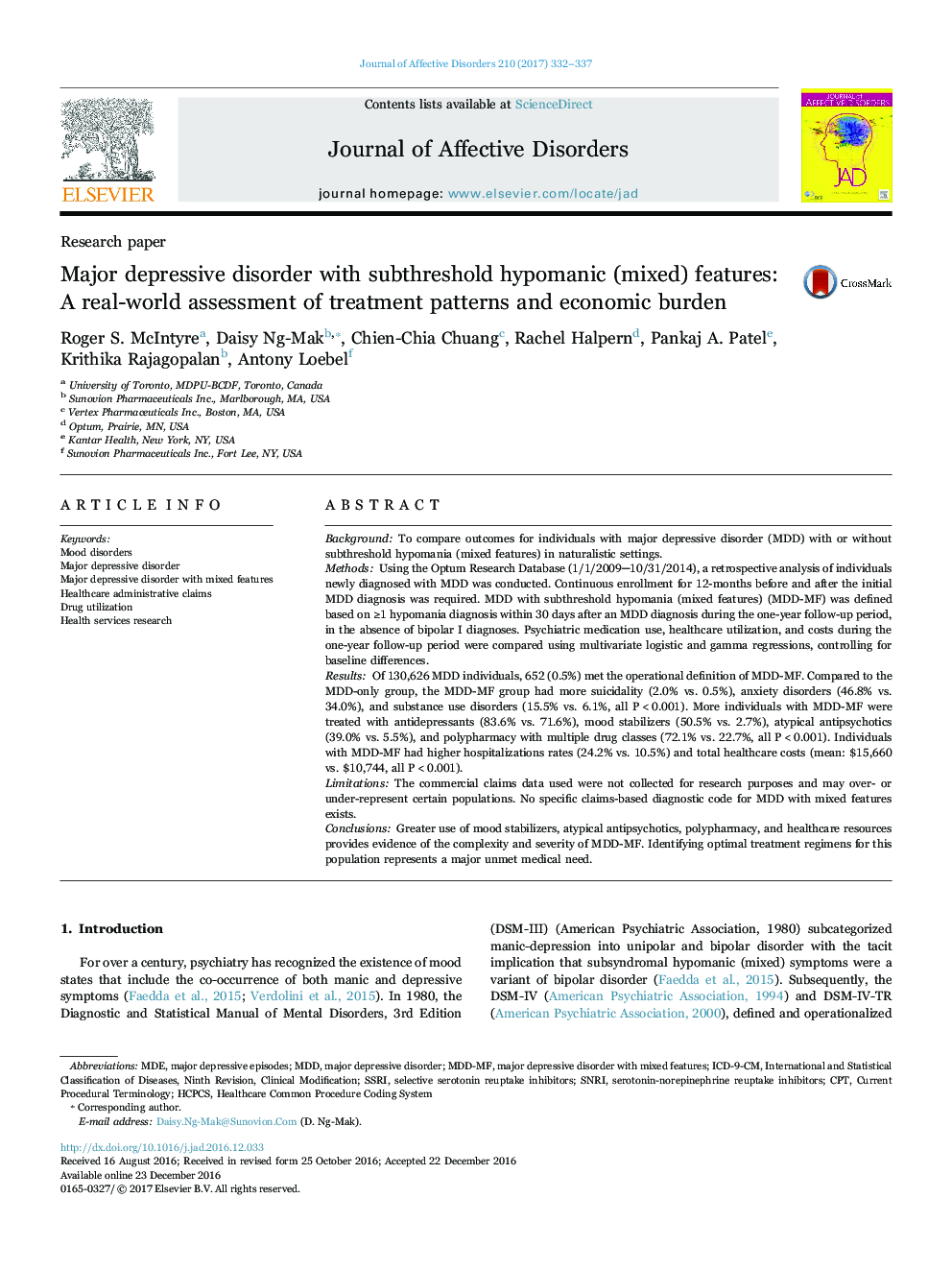| Article ID | Journal | Published Year | Pages | File Type |
|---|---|---|---|---|
| 5722411 | Journal of Affective Disorders | 2017 | 6 Pages |
â¢Major depressive disorder with subthreshold hypomania (mixed features) appears to be complex and hard to treat.â¢Individuals with MDD-MF have higher risks for suicidal behavior and substance use.â¢Individuals with MDD-MF are polypharmacy users, with high use of antipsychotics, antidepressants, and mood stabilizers.â¢Individuals with MDD-MF use more resources and have more complex medication treatment.
BackgroundTo compare outcomes for individuals with major depressive disorder (MDD) with or without subthreshold hypomania (mixed features) in naturalistic settings.MethodsUsing the Optum Research Database (1/1/2009â10/31/2014), a retrospective analysis of individuals newly diagnosed with MDD was conducted. Continuous enrollment for 12-months before and after the initial MDD diagnosis was required. MDD with subthreshold hypomania (mixed features) (MDD-MF) was defined based on â¥1 hypomania diagnosis within 30 days after an MDD diagnosis during the one-year follow-up period, in the absence of bipolar I diagnoses. Psychiatric medication use, healthcare utilization, and costs during the one-year follow-up period were compared using multivariate logistic and gamma regressions, controlling for baseline differences.ResultsOf 130,626 MDD individuals, 652 (0.5%) met the operational definition of MDD-MF. Compared to the MDD-only group, the MDD-MF group had more suicidality (2.0% vs. 0.5%), anxiety disorders (46.8% vs. 34.0%), and substance use disorders (15.5% vs. 6.1%, all P<0.001). More individuals with MDD-MF were treated with antidepressants (83.6% vs. 71.6%), mood stabilizers (50.5% vs. 2.7%), atypical antipsychotics (39.0% vs. 5.5%), and polypharmacy with multiple drug classes (72.1% vs. 22.7%, all P<0.001). Individuals with MDD-MF had higher hospitalizations rates (24.2% vs. 10.5%) and total healthcare costs (mean: $15,660 vs. $10,744, all P<0.001).LimitationsThe commercial claims data used were not collected for research purposes and may over- or under-represent certain populations. No specific claims-based diagnostic code for MDD with mixed features exists.ConclusionsGreater use of mood stabilizers, atypical antipsychotics, polypharmacy, and healthcare resources provides evidence of the complexity and severity of MDD-MF. Identifying optimal treatment regimens for this population represents a major unmet medical need.
